If you’ve ever owned or seen a gecko, you might’ve wondered something pretty wild, can a single gecko really make babies on its own?
You’ve probably heard about certain animals, like some sharks and insects, that can reproduce without a mate. So, does that happen with geckos too? Could one gecko really start a whole population all by itself?
Some geckos can reproduce asexually through a process called parthenogenesis, but most geckos reproduce sexually. This means only a few special species can make babies without a mate. For the rest, both a male and a female are needed to produce eggs that hatch into baby geckos.
It sounds simple, but there’s a lot more to it than that. Some geckos use this unusual trick for survival when males aren’t around, while others stick to the usual way to keep their populations strong and diverse.
How Geckos Usually Reproduce
For most gecko species, reproduction happens the traditional way: through mating.
After a male and female gecko mate, the female stores sperm inside her body until she’s ready to lay eggs.
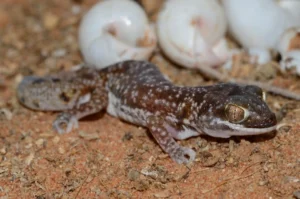
She then lays one or two eggs at a time, depending on the species. These eggs are usually hidden in tight, protected spaces like under rocks, inside bark, or buried in leaf litter.
After a few weeks, tiny baby geckos hatch out, fully independent from the moment they emerge.
There’s no parental care. No mom or dad sticking around. Hatchlings have to rely on camouflage, quick reflexes, and luck to make it through those first few weeks alive.
What Is Asexual Reproduction In Geckos?
Asexual reproduction, or parthenogenesis, happens when a female produces offspring without any male fertilization. The eggs develop on their own, becoming babies that are genetically identical to the mother.
In geckos, this is rare, but it does happen in certain species, most famously the Mourning Gecko (Lepidodactylus lugubris). Every individual in this species is female.
They don’t need males at all. Each one can produce perfect clones of herself, generation after generation.
It’s a brilliant survival trick for life on remote islands or areas where mates are hard to find. One female can land somewhere new and, over time, create an entire colony of clones.
Which Geckos Can Reproduce Asexually?
Not every gecko can pull off this genetic magic trick. Only a few species are known to reproduce asexually:
-
Mourning Gecko (Lepidodactylus lugubris) – Found across tropical islands in the Pacific. Every known individual is female.
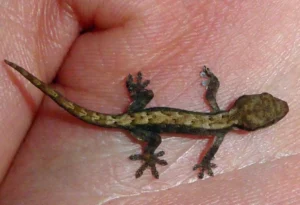
-
Some Gecko Hybrids – Occasionally, when two species interbreed, the hybrid offspring develop the ability to reproduce asexually.
Even in these cases, asexual reproduction is an exception, not the rule. The vast majority of gecko species still reproduce sexually because it keeps their genes mixing and populations healthier in the long run.
How Parthenogenesis Actually Works
Here’s what’s happening inside the body of a parthenogenetic gecko:
-
The female produces eggs just like normal.
-
But instead of needing sperm, her eggs start developing on their own.
-
Each egg grows into a baby gecko that’s a genetic copy of the mother.
Since there’s no DNA contribution from a male, all the offspring are clones. This means the entire population is genetically identical. Its great for fast reproduction, but risky for survival if conditions suddenly change.
Imagine a colony of geckos that are all the same genetically. If a disease or environmental shift hits one, it can hit all of them the same way. That’s the trade-off.
Why Some Geckos Turn to Asexual Reproduction
So why would any gecko species rely on cloning? The answer is survival. Parthenogenesis is nature’s backup plan for situations where finding a mate isn’t possible.
On small islands, for example, one lone female gecko might drift ashore on a piece of driftwood.
If she can reproduce asexually, she doesn’t need a partner and she can start a new population all by herself.
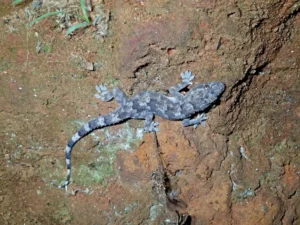
In city environments or man-made habitats, it can happen for the same reason. A single Mourning Gecko hiding in a shipment of plants could end up in a greenhouse and eventually create dozens of little clones.
It’s not the ideal way to reproduce long-term, but in the short term, it’s a clever solution to staying alive when options are limited.
Why Most Geckos Still Reproduce Sexually
While cloning sounds efficient, most geckos still stick with the old-fashioned way: sexual reproduction. And there’s a good reason for that.
When a male and female mate, their genes mix, creating unique offspring with slightly different traits. That genetic diversity helps gecko populations adapt to new environments, fight off diseases, and survive long-term changes in climate or habitat.
Asexual species might reproduce faster, but sexual species tend to last longer as a whole. The genetic variety makes their populations more flexible and resilient.
How Many Eggs Do Geckos Lay?
Most geckos lay one or two eggs at a time, but they can lay several clutches in a breeding season. The number depends on the species, age, and environment.
Here are a few examples:
-
Leopard Geckos: Usually lay two eggs at a time, with several clutches per season.
-
House Geckos: Often lay one or two eggs every few weeks when conditions are right.
-
Mourning Geckos: Lay single eggs frequently, allowing rapid population growth.
Warmer and more humid weather generally means more frequent egg-laying. The conditions have to feel “right” for the female to lay, temperature, humidity, and food availability all play a role.
How Geckos Care for Their Eggs
“Care” might be too strong a word here. Most geckos don’t actually care for their eggs once they’re laid.
The female finds a hidden, safe spot (under bark, between rocks, or in the soil) and deposits her eggs there. After that, she’s done.
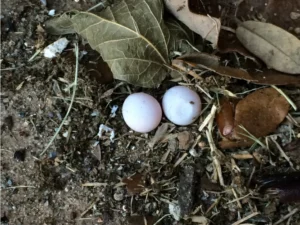
Some species even use communal nesting sites, where multiple females lay their eggs in the same protected place.
The eggs then incubate naturally, warmed by the surrounding environment until the hatchlings break free weeks later. Because there’s no parental protection, hiding the eggs well is key.
Predators like ants, snakes, or small mammals will happily eat exposed eggs if given the chance.
How Hatchlings Survive On Their Own
When baby geckos hatch, they’re completely independent. There’s no mom or dad helping them find food or shelter. Their survival depends on three things, camouflage, speed, and instinct.
They’re usually born with colors or patterns that help them blend into their environment. They can run, climb, and even catch tiny insects just days after hatching. In nature, that quick start is the only reason they make it.
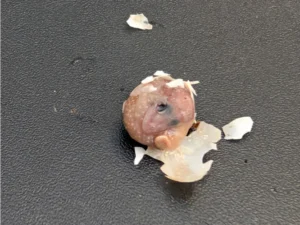
One wrong move, and they could end up as dinner for a bird or larger lizard. So from their very first breath, it’s all about survival.
Can Asexual Geckos Survive in the Wild?
Surprisingly, yes, asexual geckos like the Mourning Gecko are doing just fine in the wild.
In fact, they’ve spread across many Pacific islands and even some parts of Central America, often arriving accidentally on ships or plants.
Because every female can reproduce, their populations grow fast. That’s a big advantage when colonizing new areas.
But there’s a downside: since they’re clones, diseases or genetic defects can spread quickly through the population.
Still, their success shows just how well this unique method can work, at least in the short term.
Conclusion
So, can geckos reproduce asexually?
Yes, but only some can. Most geckos reproduce sexually, needing both a male and a female to create healthy, diverse offspring.
A few special species, like the Mourning Gecko, have evolved the ability to reproduce without males through parthenogenesis.
It’s an incredible adaptation that allows them to survive in places where mates are scarce. But because it creates clones, it comes with risks, especially when environments change.
In the end, whether through cloning or courtship, geckos have mastered reproduction in their own clever ways.
Hi, my name is Ezra Mushala, i have been interested animals all my life. I am the main author and editor here at snakeinformer.com.

